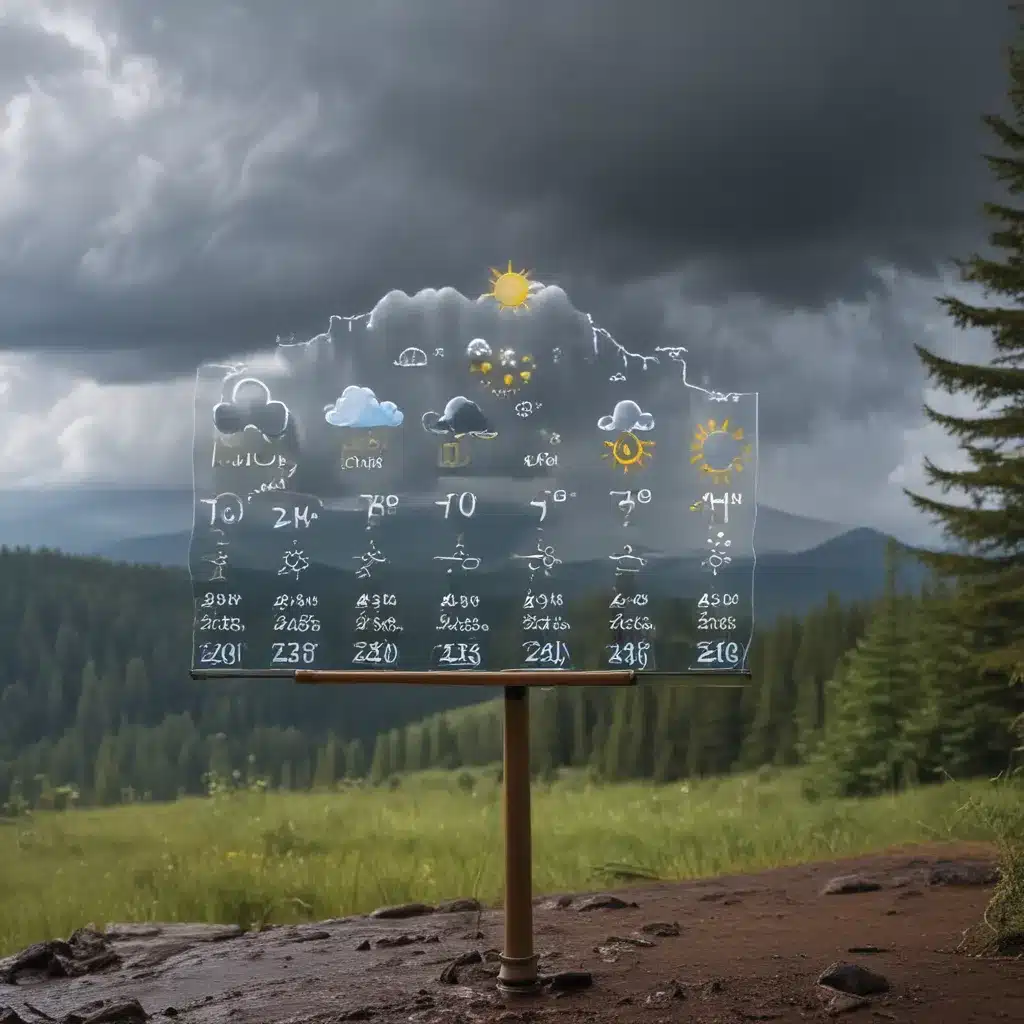
As an avid camper in the picturesque Scottish Highlands, I’ve learned that properly reading the weather forecast can make or break your outdoor adventure. Too many times, I’ve seen fellow adventurers ill-prepared for the fickle and often unpredictable weather that graces these rugged landscapes. But fear not, my fellow campers! In this comprehensive guide, I’ll share my hard-earned wisdom on how to read the weather forecast like a pro, so you can make the most of your time under the stars at Loch Ness Shores.
Understanding the Basics
Let’s start with the fundamentals. Weather forecasting is a complex science, but the key is to understand the basic elements and how they work together. Temperature, precipitation, wind, and cloud cover are the primary factors you’ll want to keep an eye on.
Temperature is an obvious one – you’ll need to dress accordingly to stay comfortable, whether that means packing extra layers or lightweight breathable fabrics. Precipitation, on the other hand, can make or break your camping experience. A light drizzle is manageable, but a heavy downpour can quickly turn your campsite into a muddy mess. And don’t forget the wind – gusts can be brutal, especially when you’re exposed on the open moors.
Decoding the Forecast
Now that you know what to look for, it’s time to actually read the weather forecast. This is where things can get a bit tricky, but with a little practice, you’ll be a pro in no time.
First, pay attention to the percentages. A 30% chance of rain means there’s a 30% chance it will rain, but a 70% chance it won’t. Personally, I like to err on the side of caution and pack for the worse-case scenario.
Next, look at the timing. Is the rain expected to hit in the morning, afternoon, or evening? This can help you plan your day and decide when it’s best to set up camp or hit the trails.
And don’t forget about the wind! The forecast will usually give you an idea of the expected wind speed and direction. This can be crucial when choosing a campsite, as you’ll want to set up in a sheltered area to avoid getting battered by the elements.
Putting it All Together
Now that you have a solid understanding of the weather forecast, it’s time to put it all together and create a plan of action.
Let’s say the forecast is calling for rain in the afternoon, with winds gusting up to 20 mph. In this case, I’d likely start my day early and try to get my hiking or exploring done before the rain hits. Then, I’d focus on finding a sheltered campsite that’s protected from the wind. Maybe I’d even pack a rain fly or tarp to create an additional barrier.
Of course, the weather is never 100% predictable, so you’ll need to be flexible and ready to adjust your plans on the fly. But by understanding the forecast and planning accordingly, you’ll be well on your way to a successful and enjoyable camping trip in the Scottish Highlands.
Staying Safe and Prepared
One final note on weather safety: never underestimate the power of the elements, especially in the unpredictable Highlands. If the forecast takes a turn for the worse, don’t hesitate to pack up and seek shelter. Your safety should always be the top priority.
I’ll never forget the time I was caught in a sudden thunderstorm on the summit of Ben Nevis. The clouds rolled in quickly, and the wind and rain were intense. I immediately turned back and headed to lower ground, even though I was just a few hundred meters from the top. It wasn’t worth the risk.
So keep a close eye on the forecast, trust your instincts, and don’t be afraid to change your plans if the weather takes a turn for the worse. With a little preparation and vigilance, you’ll be able to weather any storm and enjoy the beauty of the Scottish Highlands to the fullest.
Happy camping, my friends! And remember, if you ever need a cozy and well-equipped base camp, be sure to check out Loch Ness Shores – the perfect home base for your Highland adventures.

